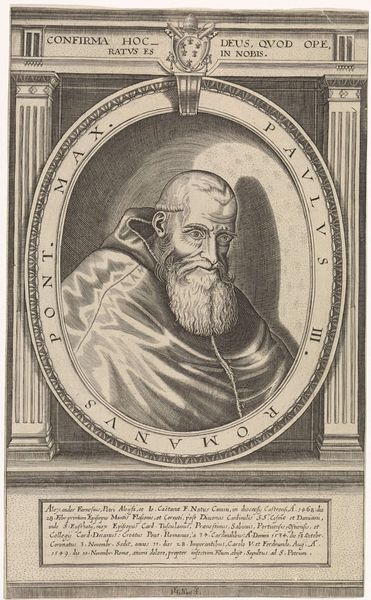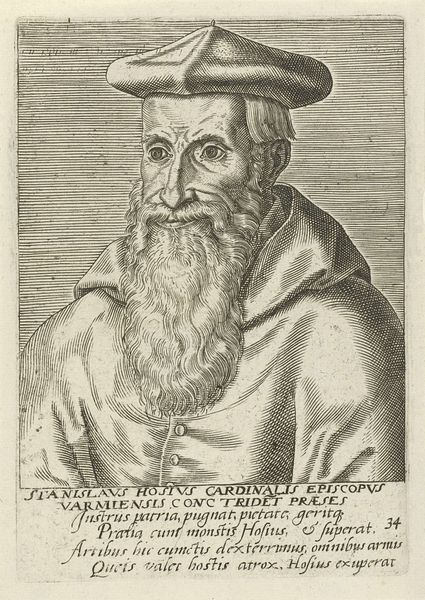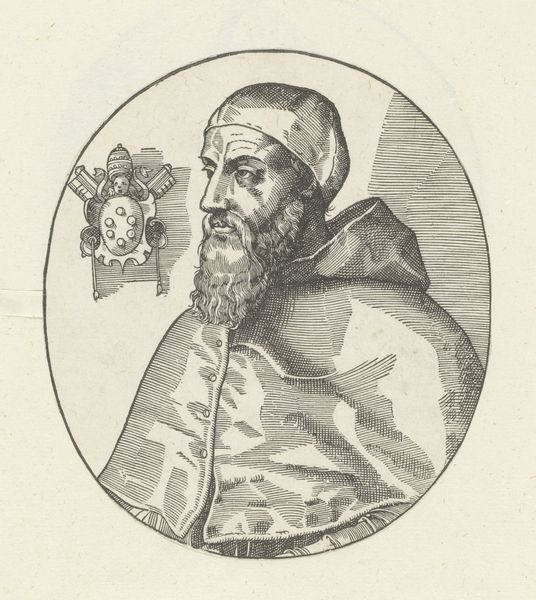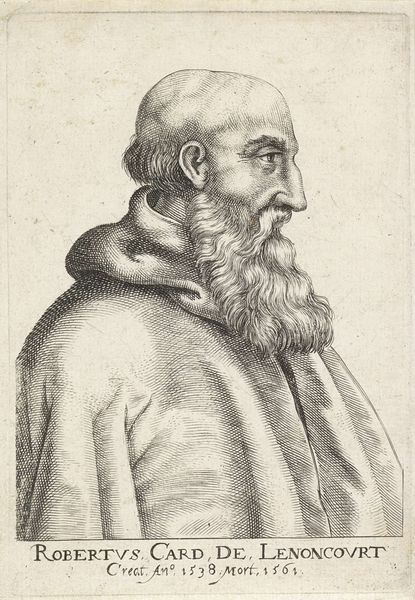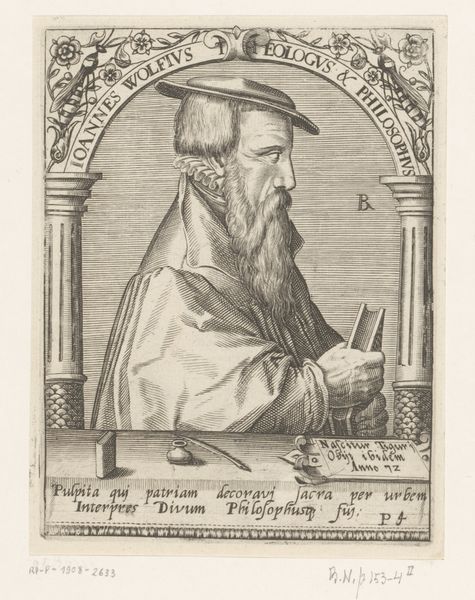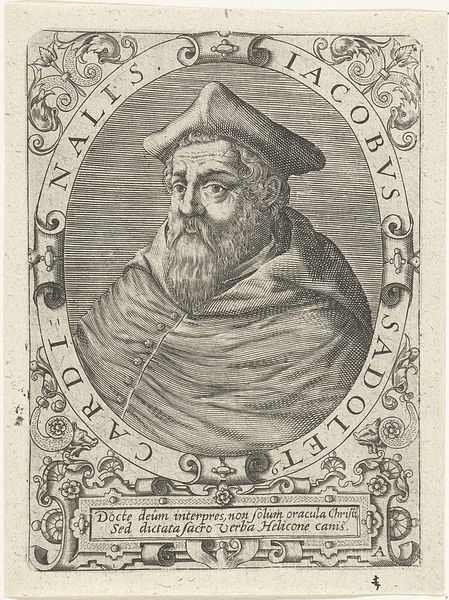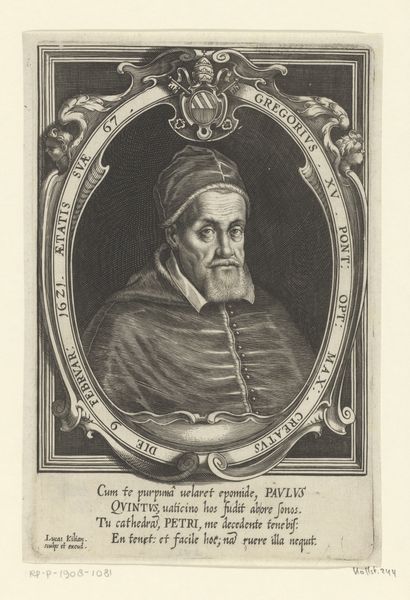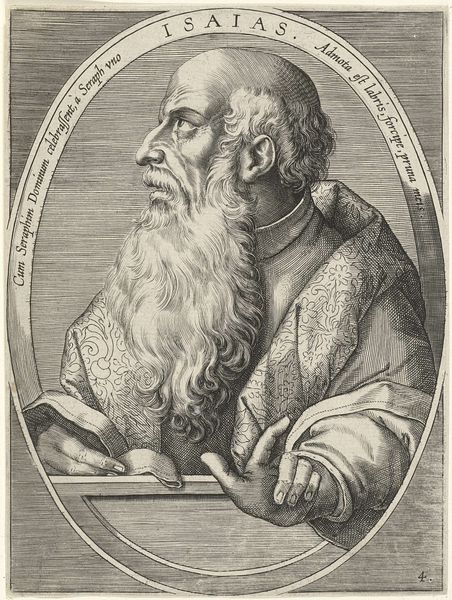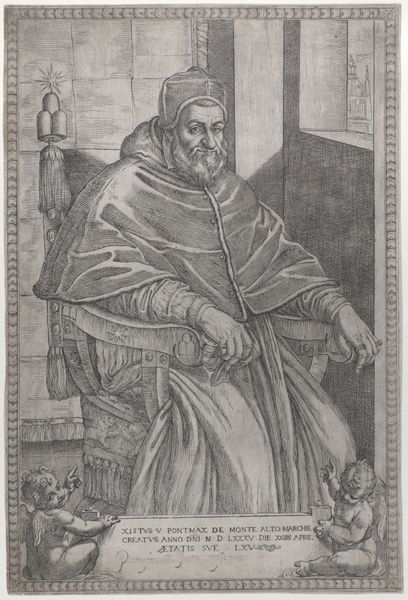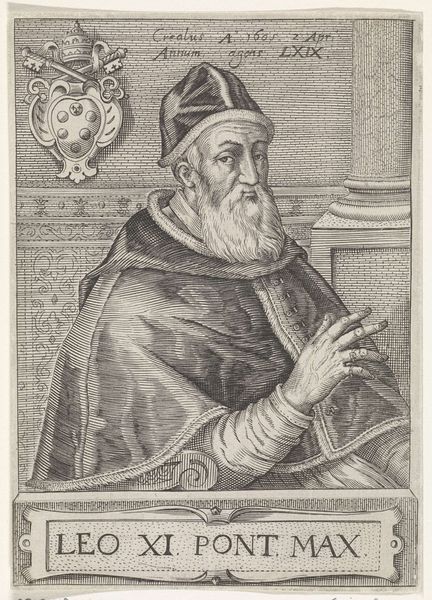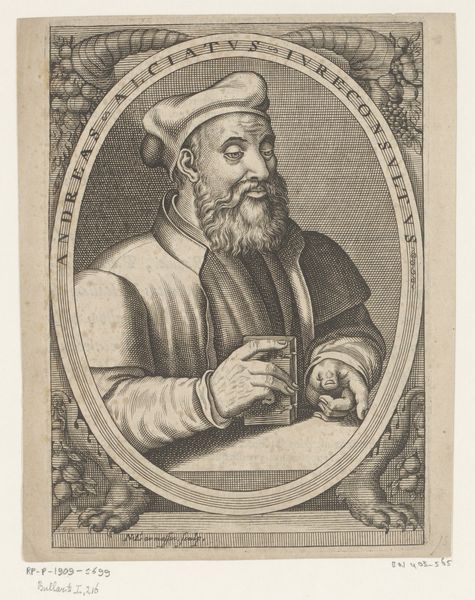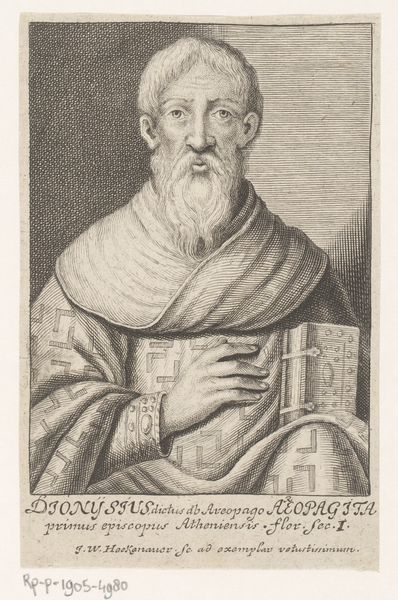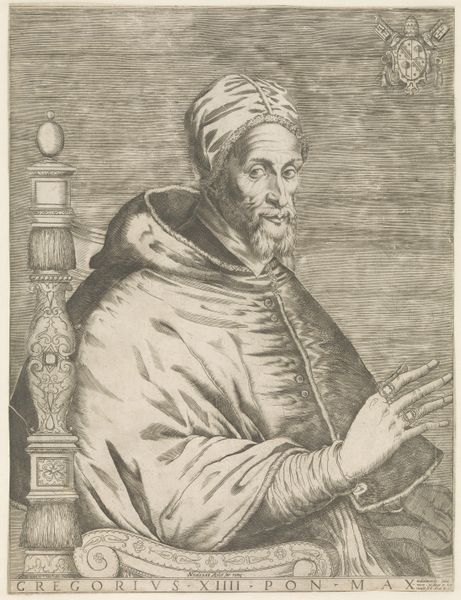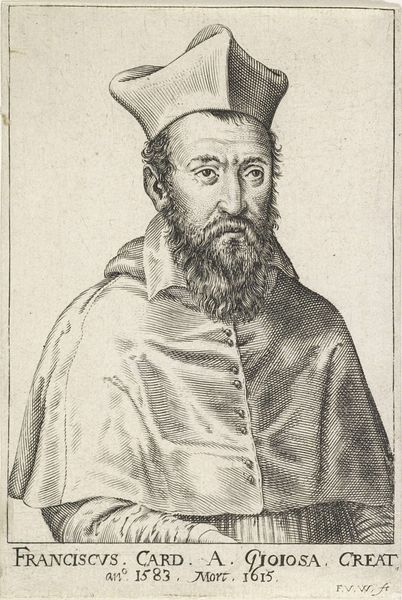
drawing, print, engraving
#
portrait
#
drawing
#
high-renaissance
# print
#
figuration
#
form
#
men
#
line
#
portrait drawing
#
academic-art
#
italian-renaissance
#
engraving
#
profile
Dimensions: 9 7/8 x 6 13/16 in. (25.1 x 17.3 cm)
Copyright: Public Domain
Editor: Here we have Agostino Veneziano’s "Pope Paul III in a Skullcap," a print from between 1514 and 1536. It's quite striking, almost severe in its depiction. What aspects of this portrait stand out to you? Curator: This print offers a fascinating glimpse into the construction of papal authority through visual imagery. It’s less about individual personality and more about presenting the *office* of the Pope. Consider the context: the papacy at this time was deeply enmeshed in political maneuvering. How does this image serve the political strategies of the Church? Editor: I see what you mean. It's like a carefully crafted performance, and the image reinforces his power. Curator: Exactly. It presents him in profile, a formal and somewhat distancing choice. Also, observe the inscription beneath the portrait. What does this inclusion communicate to the public? Editor: It definitely makes him more official and states his title proudly! Is the severity meant to project an image of strength or perhaps unapproachability during a turbulent time? Curator: Possibly both. Images like this one, circulated as prints, solidified the Church's image. They reinforced its authority, but also began to create a visual vocabulary that defined the Papacy for the masses. The distribution and accessibility of these prints arguably shaped the papacy's reception and therefore power in society at large. Editor: That makes me see it so differently! I was so focused on the individual, but you're right, it's about the bigger picture: the papacy as a political force, and the use of art as a promotional tool. Curator: Precisely! It is vital to always consider art as it functioned publicly during its original period. Editor: Well, I certainly won't forget that when I see other portraits. Thank you for sharing this deeper understanding!
Comments
No comments
Be the first to comment and join the conversation on the ultimate creative platform.
